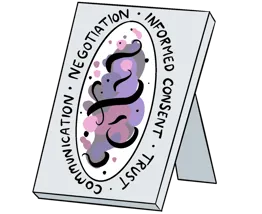Enrol in an online course today for flexible, self-paced learning—no fixed schedule required. Plus, enjoy lifetime access to course materials for convenient revisiting.
A Modern Day Approach to Trauma
Ahead of a special London workshop in April, Dr Janina Fisher explains how traditional treatments fall short. Instead, she proposes a new approach to trauma based on mindful dual-awareness, which serves to sound the ‘all-clear’ signal, and restore that crucial ability to observe our own responses.

We don’t survive trauma as a result of conscious, frontal lobe decision-making. In the moment of life threat, our survival responses are set in motion by a brain area called the limbic system, a set of structures that hold all of our emotional, sensory, and relational experience.
When we perceive danger, a cascade of neurochemicals from the adrenal glands initiates an adrenaline stress response. These neurochemicals cause an increase in heart rate and respiration, maximizing oxygen flow to muscle tissue and ‘turning off’ other non-essential organ systems, including the frontal cortex, to prepare the body to fight or flee. We are in ‘survival mode’, where pausing to think might waste precious minutes of response time. But when fight or flight are impossible, the brain and body have a backup plan: freezing like a deer in the headlights or collapsing into a total submission response and going numb.
The price we pay for instinctive self-protection is loss of the ability to bear witness to the entirety of the experience. By the time trauma survivors appear at our doorstep, they often are unsure of what happened but bear the evidence of trauma: their nervous systems still respond to stress by going into fight or flight or by going numb and collapsed; they are still afraid, guarded, frozen, and vigilant. These symptoms, however, do not feel subjectively like the legacy of trauma. More often, the trauma survivor believes, “This is just who I am”.
Later, other symptoms develop that represent desperate attempts to cope with the traumatic legacy: self-injury and suicidality, addictive behavior, risk-taking, caretaking and self-sacrifice, re-victimization, and chronic shame and self-loathing. All of these represent different ways of modulating a dysregulated nervous system: self-injury and planning suicide both induce adrenaline and endorphin responses; restricting food or overeating induce numbing; and addictive behaviors can be tailored to induce a combination of both.
In traditional trauma treatments, it has always been assumed that re-telling of the story and experiencing the feelings would resolve post-traumatic stress. However, the neurobiological research tells a different story: lower levels of the brain, including the limbic system, will always have a tendency to respond to reminders of threat as if they are a threat unless the frontal cortex can tell it to ‘hold off’ sounding the alarm. In fact, re-telling of the story has a greater chance of reactivating the trauma responses than it does of desensitizing it. To actually desensitize or transform a traumatic memory, we need either to help clients change the mind-body responses to it or to reinstate activity in the prefrontal cortex so that the client can interpret the responses as sensation rather than threat, past rather than present.
Instead of treating the events, we need to challenge the subjective perception of traumatized clients that the symptoms are just “who they are”. We need to counteract the habitual trauma responses by calling attention to them, by providing psychoeducation about how and why they are symptoms, by encouraging mindfulness and curiosity in place of reactivity. Using mindful dual awareness, clients can learn to observe rather than ‘sit with’ the emotional and physical responses, and just notice the unfolding of feelings, thoughts and body sensations. Dual awareness allows for self-witnessing, the very ability that was lost at the moment of trauma when the prefrontal cortex went ‘offline’ and the client fought, hid or submitted instinctively. Mindfulness appears to act as an ‘all-clear’ signal to the body (LeDoux, 2002): once the frontal lobes are back ‘online,’ the body can relax and know that everything is ‘OK’.
Trauma-Informed Stabilisation Treatment: Working with Substance Abuse, Eating Disorders, Compulsive Self-Harm and Suicidality, with Janina Fisher, will be in London W14 on April 12-13. For more info and to book your place on the two-day workshop, visit www.psychotherapyexcellence.com.


















